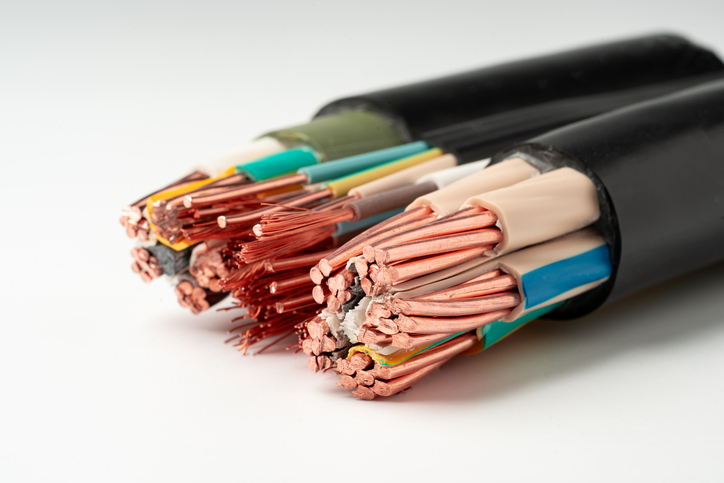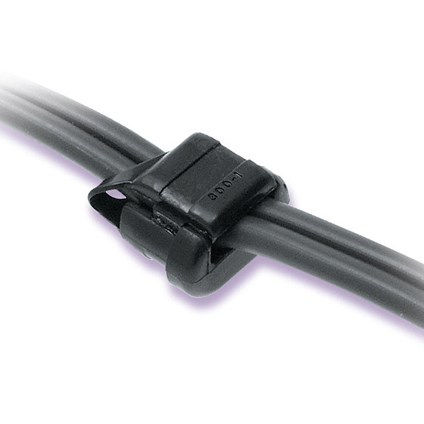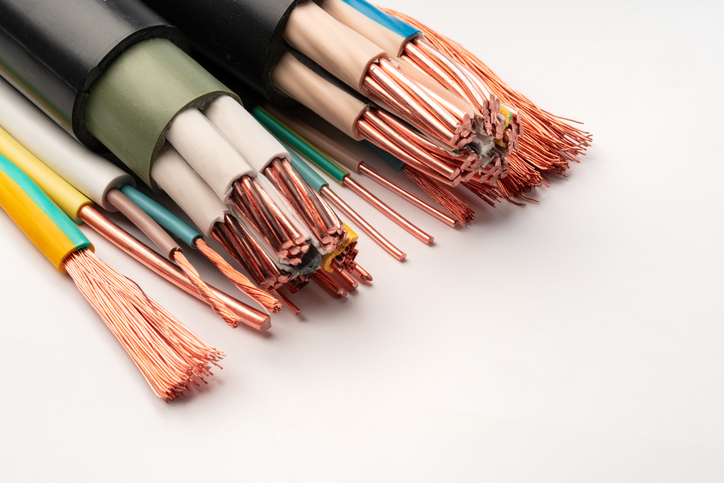Ribbon Cable
 Ribbon cables are flat multi-conductor configurations in which the individual components are easily separated. Developed initially for aerospace applications, ribbon cables are increasingly being used wherever limited space makes installation of conventional cables difficult. Ribbon cables have been placed between panels and along equipment cabinet walls. They are frequently laid, multi-layered, in trays.
Ribbon cables are flat multi-conductor configurations in which the individual components are easily separated. Developed initially for aerospace applications, ribbon cables are increasingly being used wherever limited space makes installation of conventional cables difficult. Ribbon cables have been placed between panels and along equipment cabinet walls. They are frequently laid, multi-layered, in trays.
Ribbon cables offer several advantages over a standard cable construction. They are space- and weight-saving, will follow the contour of any surface, are extremely flexible and can be bent around small radii, permit excellent heat dissipation from their comparatively large surface areas, and reduce wiring errors. Accurate control of diameters and component spacing optimizes electrical properties- impedance, capacitance and inductance. Component separation by spacers may also be used to minimize crosstalk.
BONDED RIBBON CABLE
Bonded ribbon cables, composed of easily separated components, offers maximum savings inweight and space. For vinyl covered components only.
WOVEN RIBBON CABLE
Woven ribbon cables permit assembly of components with any type insulation or combination of types. Flexible constructions are available. Strain reliefs can be woven in at predetermined folds to prevent conductor flexing fatigue. Yarns used for weaving include cotton, nylon, Kapton, Nomex, Teflon, Dacron, and others, selection of which depend on the cable components, operating environment and cost
RIBBON CABLE COMPONENTS
Ribbon cables are usually fabricated from single conductors, twisted pairs or shielded wires, although almost any component with a finished diameter no greater than 0.250" may be used. In specifying ribbon cables, the following guidelines should be followed:
WIRES
Any military or commercial type size 30 AWG or larger, insulation type. Different types and insulations may be combined in the same ribbon. Where all components have an outer vinyl surface, the ribbon will be formed by heat sealing or bonding; with non-vinyl components or with combinations of vinyl and other types, the ribbon will be formed by weaving.
CIRCUIT IDENTIFICATION
Insulation completely color-coded (solid colors and striped combinations) meeting MIL-STD-1 04, MIL-STD-681 and Munsell color standard, as applicable.
COMPONENT DIAMETERS
Where components of several diameters are used in the same ribbon, no dimensional limitations apply (up to the 0.250" maximum) if each size is grouped. If diameters alternate across the ribbon, the difference in adjacent component diameters should not exceed 0.020".
WIDTH
Up to several inches. Theoretically any width is possible, but from a handling standpoint a practical maximum does exist.
Related Resources

SJOOW vs. SOOW Cable
If you’re looking for multiconductor cords , chances are you’re trying to decide between SJOOW vs. SOOW cords. Both common conductor cables are used in electrical applications, are durable, and ideal for many projects.Learn More
Twisted Component Cable Constructions
Cables composed of twisted components generally have better flexibility characteristics than parallel conductor cables.Learn More
Flat Cable
Although flat jacketed cable can be constructed from the same range of wire types as those used in ribbon cable, in practice this configuration is usually restricted to vinyl insulated wires and vinyl jackets.Learn More


